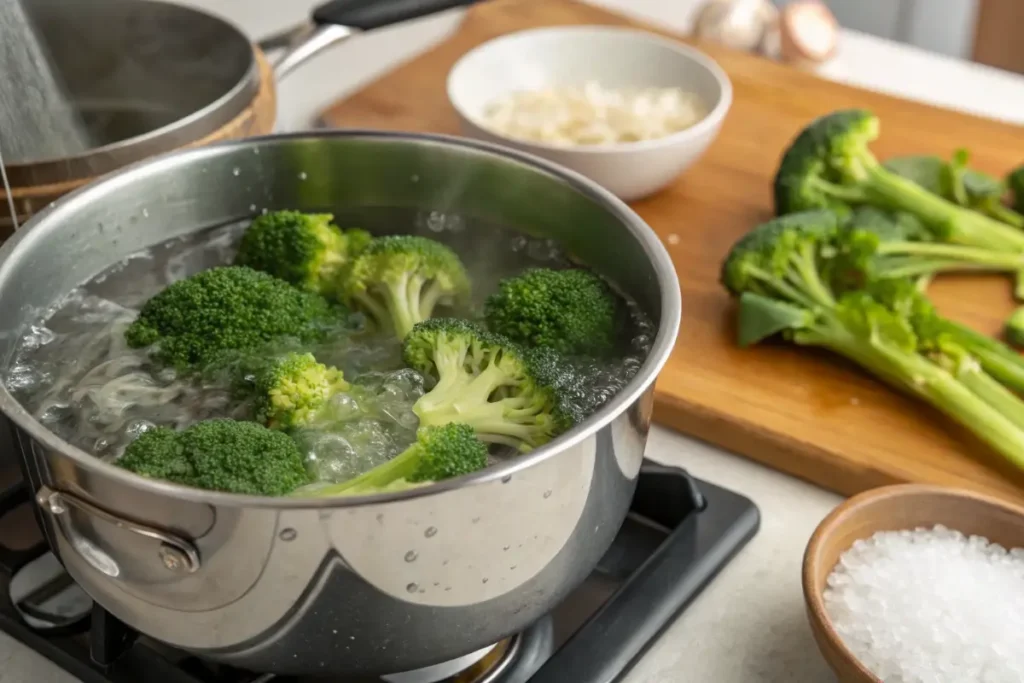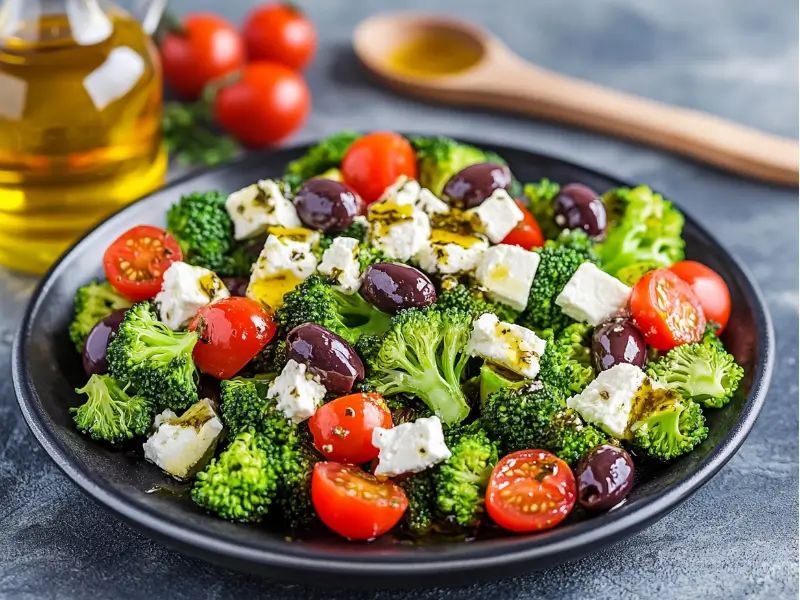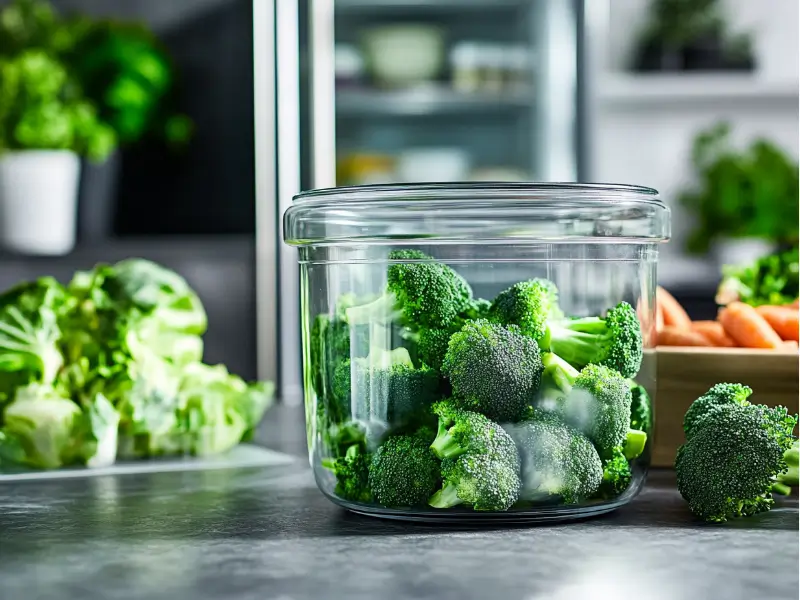Creating the perfect salad isn’t just about tossing some greens together; it’s about achieving a delightful mix of textures, colors, and flavors that complement each other beautifully. Whether it’s the crunch of fresh vegetables, the vibrant colors that catch the eye, or the dressing that ties it all together, every element plays a role in elevating a simple dish to something truly memorable. One technique that stands out in ensuring vegetables shine in salads is blanching, especially for sturdy options like broccoli.
Blanching increases the appearance, texture, and taste of broccoli, making it a star ingredient in your salad bowl. The process not only preserves its natural crunch but also makes it more appealing and easier to pair with other salad components like leafy greens, grains, or protein. But why do you blanch broccoli for salad? The answer lies in its ability to strike the perfect balance between raw and cooked, bringing out the vegetable’s full potential.
In this article, we’ll dive into the science and art behind blanching, uncovering its numerous benefits, the step-by-step process to master it, and how to use blanched broccoli in flavorful salad recipes. Whether you’re a kitchen novice or a seasoned chef, you’ll discover practical tips and delicious ideas to make your next salad a hit. Let’s get started!
Table of contents
What is Blanching?
Definition of Blanching

Blanching is a cooking technique where vegetables are briefly boiled and then rapidly cooled in ice water. This method halts the cooking process almost instantly, locking in both color and crunch. For broccoli, blanching takes it from dull and fibrous to vibrant and tender-crisp. It’s a culinary trick used worldwide, perfect for prepping vegetables for salads, stir-fries, and even pickling.
By partially cooking broccoli, blanching removes its raw edge while preserving its natural flavor and nutrients. The result? Broccoli that’s soft enough to enjoy but still maintains that satisfying crunch.
Historical and Culinary Context
The roots of blanching go way back, tied to the traditions of preserving food quality and enhancing presentation. Over time, chefs and home cooks alike embraced blanching for its versatility. It became a staple in cuisines that emphasize fresh, bright vegetables—think Mediterranean salads or Asian stir-fries.
Blanching broccoli, in particular, is a game-changer for salads. It avoids the rubbery texture of overcooked broccoli while steering clear of the fibrous toughness of raw florets. This balance makes it ideal for a variety of salads, from creamy classics to zesty international dishes.
Benefits of Blanching Broccoli for Salad
Increased Color and Presentation
Have you ever noticed how raw broccoli looks a little dull and tired? That’s where blanching works its magic. By briefly boiling broccoli and shocking it in ice water, you can bring out its vibrant green hue, making your salad look fresher and more appetizing. If you’re wondering, why do you blanch broccoli for salad, the answer starts here: it raises the visual appeal. Whether you’re preparing a formal dinner or a quick lunch, that pop of green creates an inviting plate that’s hard to resist.
Blanching also includes broccoli is evenly cooked, giving your salad a professional touch. No more uneven textures or off-putting colors—just beautifully balanced bites.
Improved Texture
Texture can make or break a salad. Raw broccoli can be fibrous and tough to chew, while overcooked broccoli turns mushy and unappetizing. Blanching hits the sweet spot, creating broccoli that’s tender yet crisp. This perfect balance adds depth to your salad, making every bite enjoyable.
When you blanch broccoli, you soften the hard fibers enough to make them palatable, but you retain a satisfying crunch. This texture pairs wonderfully with other salad ingredients like crunchy carrots, juicy tomatoes, or creamy dressings.
Preservation of Nutrients
Did you know blanching broccoli helps preserve its vitamins and minerals? Unlike boiling, which can leach nutrients into the water, blanching limits the cooking time, allowing the broccoli to retain its nutritional value. If you’ve ever wondered why do you blanch broccoli for salad, this is a key reason—blanching maintains both taste and health benefits.
Compared to other methods, such as steaming or roasting, blanching is faster and just as effective in locking in nutrients. You get all the health perks of broccoli—like vitamin C, potassium, and fiber—while enhancing its flavor and texture.
How to Blanch Broccoli for Salad

Step-by-Step Instructions
Blanching broccoli might sound fancy, but it’s surprisingly simple. Here’s how to do it:
- Prepare the Broccoli: Cut the broccoli into bite-sized florets for even cooking.
- Boil Water: Fill a large pot with water and bring it to a rolling boil. Add a pinch of salt if desired.
- Blanch the Broccoli: Carefully drop the florets into the boiling water. Let them cook for 2–3 minutes, just until they turn bright green.
- Shock in Ice Water: Immediately transfer the broccoli into a bowl of ice water. This step halts the cooking process and locks in the color and texture.
- Dry and Store: Drain the broccoli and pat it dry with a clean towel. Now it’s ready to use in your salad.
Tips for Perfect Blanching
Timing is everything! Over-blanching can make broccoli mushy, while under-blanching can leave it too raw. Stick to 2–3 minutes for the best results. Also, avoid overcrowding the pot, as this can lower the water temperature and lead to uneven cooking.
To add extra flavor, you can season the water with a pinch of salt or a squeeze of lemon. This subtle seasoning increase the broccoli’s natural taste.
Mistakes to Avoid
Skipping the ice water bath is one of the most common mistakes. Without it, your broccoli will keep cooking from residual heat, turning limp and dull. Similarly, cutting uneven florets can lead to inconsistent results, so aim for uniform pieces.
Recipes Featuring Blanched Broccoli

Simple Blanched Broccoli Salad
If you’re craving a quick, healthy dish, this simple blanched broccoli salad is a go-to option. Blanching not only makes the broccoli visually appealing but also increases its flavor, which pairs beautifully with light dressings.
- Ingredients: Fresh broccoli florets, olive oil, lemon juice, salt, and pepper.
- Preparation: Blanch the broccoli as outlined earlier, then toss it with olive oil, a squeeze of lemon, and seasonings. Serve chilled for a refreshing bite.
Asian-Inspired Broccoli Salad
Take your salad game up a notch with this tangy and spicy Asian-inspired dish. The combination of blanched broccoli, sesame dressing, and vibrant toppings creates a delightful explosion of flavors.
- Ingredients: Blanched broccoli, shredded carrots, toasted sesame seeds, soy sauce, rice vinegar, and honey.
- Preparation: Combine the blanched broccoli and carrots. Whisk the dressing ingredients (soy sauce, vinegar, honey) and drizzle over the salad. Top with sesame seeds for crunch.
Blanching makes the broccoli tender enough to absorb the flavors while keeping it crisp—just what you need for a perfect Asian salad.
Mediterranean Broccoli Salad
Love bold flavors? This Mediterranean broccoli salad is a wholesome mix of savory and fresh ingredients.
- Ingredients: Blanched broccoli, cherry tomatoes, feta cheese, Kawabata olives, and a drizzle of olive oil.
- Preparation: Mix the blanched broccoli with tomatoes, crumbled feta, and olives. Drizzle olive oil and sprinkle oregano for a classic Mediterranean taste.
Salad inspiration, check out Chicken Salad Chick Broccoli Salad Recipe for another delicious idea.
FAQs on Blanching Broccoli

Can Blanching Be Skipped for Salad?
While some salads use raw broccoli, blanching is highly recommended for its ability to increase flavor, texture, and color. Why do you blanch broccoli for salad? It makes the broccoli softer and easier to chew, without losing its crunch. Raw broccoli, by contrast, can be too fibrous for some palates.
How Long Can Blanched Broccoli Be Stored?
Blanched broccoli can be stored in the fridge for up to 3 days. include it’s well-dried before storage to prevent sogginess. Properly stored, it retains its crispness and vibrant color, making it ready for salads anytime.
What Other Vegetables Can Be Blanched?
Blanching isn’t just for broccoli! You can blanch carrots, green beans, asparagus, and even kale. This method works wonders for any sturdy vegetable, preserving their flavor and texture for salads and side dishes.
Recipe ideas, browse Chicken Casserole Pasta Broccoli Recipe, which incorporates blanched broccoli into a hearty meal.
Conclusion and Final Thoughts
Why Blanching Matters for Broccoli Salads
So, why do you blanch broccoli for salad? It’s about more than just aesthetics—it’s a method to increase flavor, texture, and nutritional value. By blanching, you create vibrant, tender-crisp broccoli that pairs perfectly with a variety of salad ingredients. Whether you’re tossing it with a creamy dressing or combining it with Mediterranean flavors, blanching includes the broccoli is at its best.
Blanching also opens the door to experimenting with global cuisines. From zesty Asian-inspired salads to hearty Mediterranean dishes, this simple cooking technique is the key to unlocking broccoli’s full potential. And let’s not forget, blanching preserves essential nutrients, making it a smart choice for health-conscious eaters.
Final Tips
Now that you’ve learned the secrets to blanching, it’s time to try it for yourself! Start with one of the recipes we’ve shared, or Innovate your own culinary creativity. Whatever you do, always remember the importance of timing and the ice bath—it’s the difference between limp and lovely broccoli.

